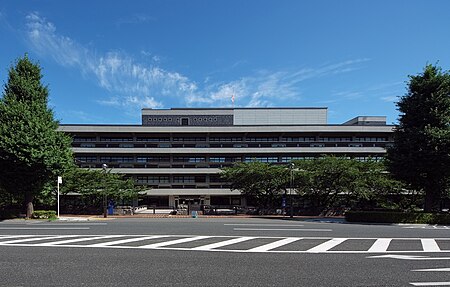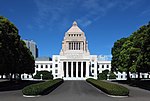National Diet Library
1948 establishments in JapanDeposit librariesEducation in KyotoGovernment agencies established in 1948Government of Japan ... and 5 more
Legislative librariesLibraries established in 1948Libraries in TokyoNational librariesWorld Digital Library partners

The National Diet Library (NDL) (国立国会図書館, Kokuritsu Kokkai Toshokan) is the national library of Japan and among the largest libraries in the world. It was established in 1948 for the purpose of assisting members of the National Diet of Japan (国会, Kokkai) in researching matters of public policy. The library is similar in purpose and scope to the United States Library of Congress. The National Diet Library (NDL) consists of two main facilities in Tokyo and Kyoto, and several other branch libraries throughout Japan.
Excerpt from the Wikipedia article National Diet Library (License: CC BY-SA 3.0, Authors, Images).National Diet Library
Aoyama-dori, Chiyoda
Geographical coordinates (GPS) Address Website External links Nearby Places Show on map
Geographical coordinates (GPS)
| Latitude | Longitude |
|---|---|
| N 35.678333333333 ° | E 139.74416666667 ° |
Address
国立国会図書館・東京本館 (NDL)
Aoyama-dori
100-0014 Chiyoda
Japan
Open on Google Maps










